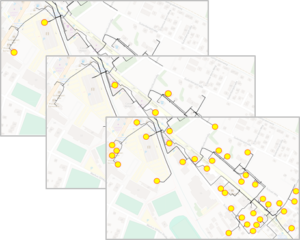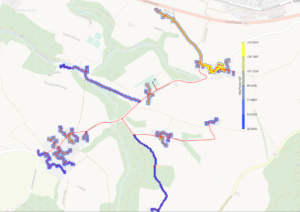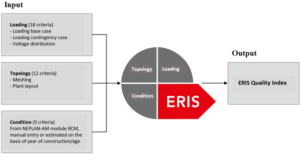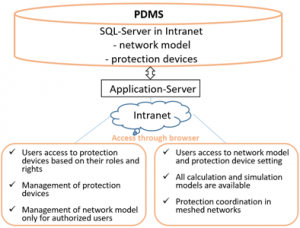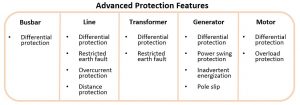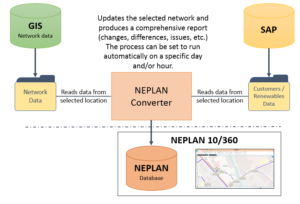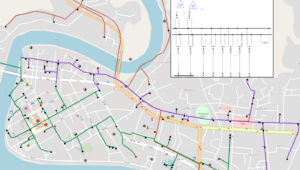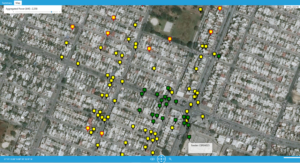NEPLAN greift die Marktbedürfnisse international etablierter Kunden auf und behält den Überblick über Änderungen von Standards und Markttrends, indem es Produktentwicklungen und projektspezifische Lösungen vorschlägt. Unsere kontinuierliche Zusammenarbeit mit Universitäten durch Forschungsprojekte und mit Gremien und Verbänden (FNN, VDE, ENTSO-E, CIGRE, CIRED) ermöglicht es uns, die Marktlücken zu schließen, sobald sie entstehen. Auf die neuen Herausforderungen antworten wir mit spezialisierten und kundenspezifischen NEPLAN Add-ons und Services.
NEPLAN bietet modulare Erweiterungen mit Funktionen, die projektspezifisch angepasst und freigeschaltet werden können. Prozesse können parametrisiert und automatisiert implementiert werden. Ein Bedienfeld mit Benutzeroberfläche für Administratoren erleichtert zudem das Einstellen von Parametern, die Zuordnung von Funktionen und Jobs zu Prozessen.
NEPLAN-Add-on CGMES
CGMES spezifiziert den Datenaustausch zwischen DSOs und vorgelagerten TSOs. NEPLAN hat dieses Add-On entwickelt, um dem Kunden eine automatische Lastflusszeitsimulation über den parametrierten Zeitraum (z.B. 3 Tage) zu ermöglichen. Es bietet eine automatische Konvertierung der Prognosedaten in das NEPLAN-Importformat für zeitabhängige Daten (Zeitreihen) und ermöglicht den zyklischen Import der Daten in NEPLAN. Nach Abschluss der Berechnung kann der Anwender das Datenmodell mit den Ergebnissen der Lastflusszeitsimulation nach CGMES-Format automatisch exportieren.
Das berechenbare Datenmodell steht in NEPLAN zur Verfügung und kann für diese Aufgaben genutzt werden, während die notwendigen Import- und Exportschnittstellen als Produktlösung zur Verfügung stehen. NEPLAN besitzt ein Gold-Zertifikat für CIM-basierte Exporte und das Fehlerpotenzial ist aufgrund der produktbasierten Lösung gering.
NEPLAN-Add-on Real Time Data
Realistische Analysen auf Basis von Echtzeit-Messwerten und Schaltzuständen sind ein Muss für moderne Energiesysteme. Wichtige Parameter sind die Analyse von Was-wäre-wenn-Szenarien, die Berücksichtigung von Referenztagen, die prädiktive Lastflussberechnung und die Lastflusszeitsimulation mit Messungen.
Dieses Add-On bietet Datenintegration mit Netzleitsystemen, Schnittstellen für den Import von Messwerten und Schaltzuständen und einfache Integration in die Netzleitstelle über Thin Client (Webbrowser). IT-Sicherheitsanforderungen werden durch den verschlüsselten Datenaustausch zwischen Netzleitsystem und NEPLAN berücksichtigt.
NEPLAN nutzt Synergien im Netzmanagement und in der Netzplanung durch ein gemeinsames Netzdatenmodell, während die Lastfluss-Zeitsimulation realistischer ist, indem statt standardisierter Lastprofile echte Messwertzeitreihen verwendet werden. Zusätzliche Analysemethoden und Entscheidungshilfen für das Netzwerkmanagement stehen ebenfalls zur Verfügung.
NEPLAN-Add-on Lastmodellierung
Grund für die Entwicklung dieses Add-ons war die Notwendigkeit der Anbindung an GIS, ergänzt durch Schnittstellen zu anderen Systemen wie SAP zur Lastmodellierung sowie die Modellierung von Lastszenarien und Betriebszuständen aus Betriebsdaten.
Das NEPLAN Add-On Load Modelling bietet die Generierung von Lastszenarien, die zu realistischeren Ergebnissen führen, die Verarbeitung verschiedener Quellen und die Anpassung der Berechnung durch Feinabstimmung der Parameter. Sie erhalten den Vorteil flexibler Dateiformate und individuell anpassbarer Lösungen an bestehende Datenquellen.
NEPLAN-Add-on Datenverwaltung
Die Forderung nach Schnittstellen zum GIS und nach inkrementeller Datenmodellaufbereitung sowie die Notwendigkeit der Optimierung des Datenmodells, der Erstellung von Strukturmerkmalen und der Reduzierung von Knoten führten zum Vorschlag des NEPLAN Add-On Data Management.
Mit diesem Add-On kann der Anwender ein berechenbares Netzwerkdatenmodell mit Strukturmerkmalen generieren und Netzwerkdatenmodelle optimieren. Initialer Datenimport und inkrementelle Datensynchronisation sind ebenso möglich wie die Optimierung größerer Netzwerke auf Performance. Schließlich gibt es die Möglichkeit von inkrementellen Datenmodelländerungen.
